National Inventory of Sites Contaminated with Obsolete Pesticides in Kazakhstan
Project dates: 2023-2024.
Number of people at risk: 7000
Source of pollution: Burials and former pesticide warehouses, toxaphene, lindane, DDT
Project implementers: Civil Society Association “Human Health Institute” (HHI), Association of legal entities "Ecoforum Kazakhstan," Public Association “Karaganda Regional Ecological Museum” (EcoMuseum), EHPMI
Total cost: 120 000 USD, funded by FAO/GEF
The project was implemented in 2023-2024 by Human Health Institute, Karaganda Regional Ecological Museum (EcoMuseum), Ecoforum of Kazakhstan, and EHPMI, with financial and organizational support of Food and Agriculture Organization of the United Nations (FAO) and Global Environment Facility (GEF).Project dates: 2023-2024.Number of people at risk: 7000Source of pollution: Burials and former pesticide warehouses, toxaphene,…
Obsolete pesticides remain one of the major environmental and health problems in Kazakhstan. People come in contact with DDT and other organochlorine pesticides, contaminated soil, and empty pesticide containers. But the information about such exposures and locations of contaminated areas and remaining pesticides stocks was very scarce.
The national inventory of sites contaminated with obsolete pesticides was implemented in 2023-2024 as part of the project “Lifecycle Management of Pesticides and Disposal of POPs Pesticides in Central Asian countries and Türkiye,” implemented by FAO and funded by GEF. The study was done using the Rapid Environmental Assessment (REA) protocol. REA is a tool developed by FAO to assess and prioritize pesticide contaminated sites for further intervention.
The project was initiated by FAO, funded by GEF and implemented jointly by FAO and the Ministry of Ecology and Natural Resources. Three civil society organizations conducted assessments of sites contaminated with obsolete pesticides: Human Health Institute, Karaganda Regional Ecological Museum and Association “Ecoforum of Kazakhstan.” Each organization worked in designated regions of Kazakhstan: Human Health Institute in the South, Karaganda Regional Ecological Museum in the North and East, Ecoforum of Kazakhstan in the West. EHPMI provided support to the project by training investigators, doing quality control of the collected data, and helping in uploading the data and writing the inventory report.
Trainings
For the purposes of training the teams of investigators and presenting the inventory methods to representatives of the government and local partners FAO conducted series of workshops in different parts of Kazakhstan. The training workshops aimed to increase awareness of the inventory team and national and regional governments about the obsolete pesticides and associated health and environmental risks and to provide knowledge about the inventory process, management, methodology, data processing and storage. The workshops also served as starting points for the development of workplans and establishment of collaboration between agencies and investigator teams to ensure administrative and technical support for the inventory process.
The trainings were held in May-July, 2023 in six locations in Kazakhstan: Shymkent, Atyrau, Almaty, Oskemen, Aktau, Petropavlovsk. The trainings were participated by 127 people, including representatives of the Ministry of Ecology and Natural Resources of the Republic of Kazakhstan, Departments of Ecology, Departments of Sanitary and Epidemiological Surveillance, and non-governmental organizations (NGOs).
Obsolete Pesticides in Kazakhstan
Kazakhstan has over 21 million hectares of agricultural lands and until the 1990s pesticides were widely used in all this area. The presently prohibited obsolete pesticides were never produced in Kazakhstan and were brought from other parts of Soviet Union. After DDT and other organochlorine pesticides were prohibited in 1980s, big stocks still remained in numerous storages across the country. It is known that there were 727 such storages, but a lot of information about the volumes of pesticides and the exact locations of those storages was lost, which complicated the assessment and management of the problem.
An inventory conducted in 2003 identified some limited volumes of obsolete pesticides, including: 15 metric tonnes (MT) of toxaphene; 24 MT of lindane, and 0.5 MT of DDT. However, based on various official sources the volume of banned obsolete pesticides was estimated to be about around 1,618 – 6,126 MT and the number of empty containers 169,000 – 546,544 pieces. It means that the inventory of 2003 was able to identify only a small portion of obsolete pesticides in the country. Therefore, a more thorough inventory is necessary in order to develop management approaches and disposal options.
The first day was devoted to introductions and learning about the EMTK Vol. 1 method. The second day focused more on REA methodology. Particular attention was paid to the use of personal protective equipment during the site assessments. The third day was devoted to practical application of the theoretical knowledge in a real site assessment. The participants received in electronic and printed forms “Investigator’s Guide to Rapid Environmental Assessment” and workshop agenda and field forms. The “Investigator’s Guide…” describes the REA processes, including data collection and use of the online database.
Theoretical part of the training
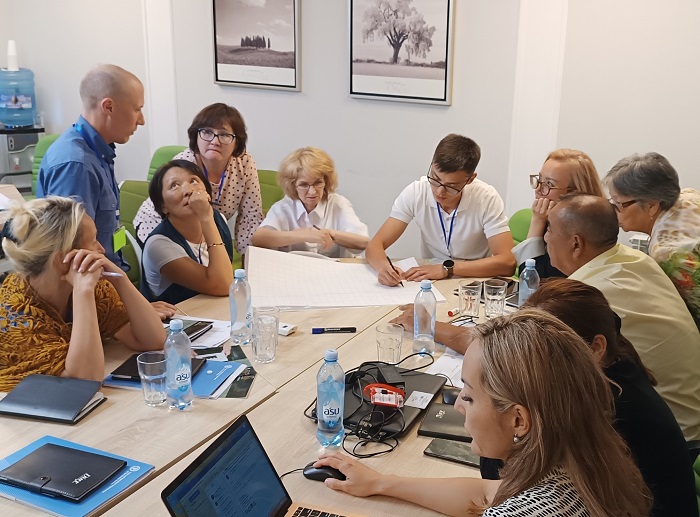
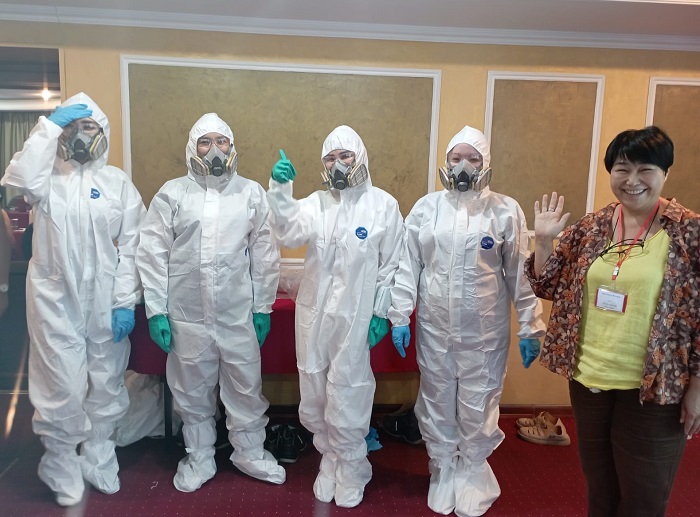
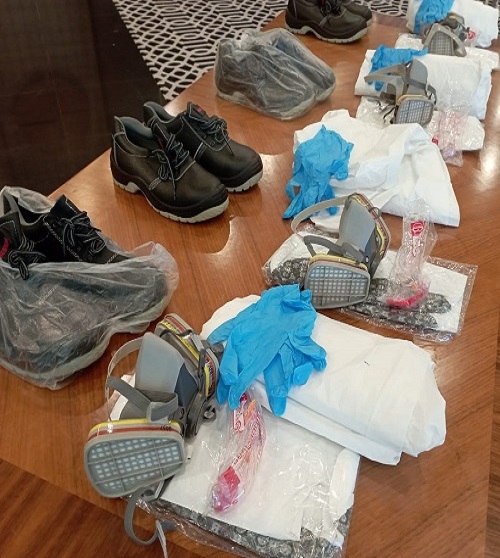
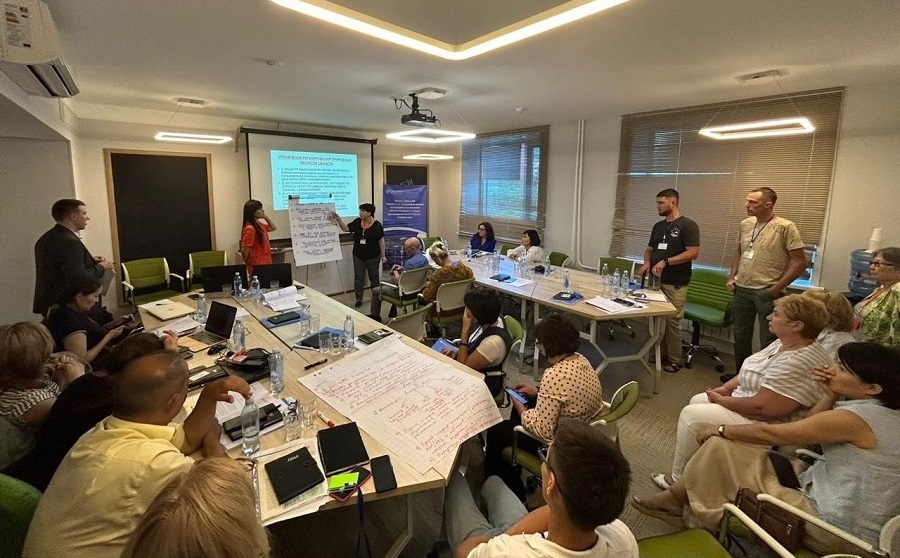
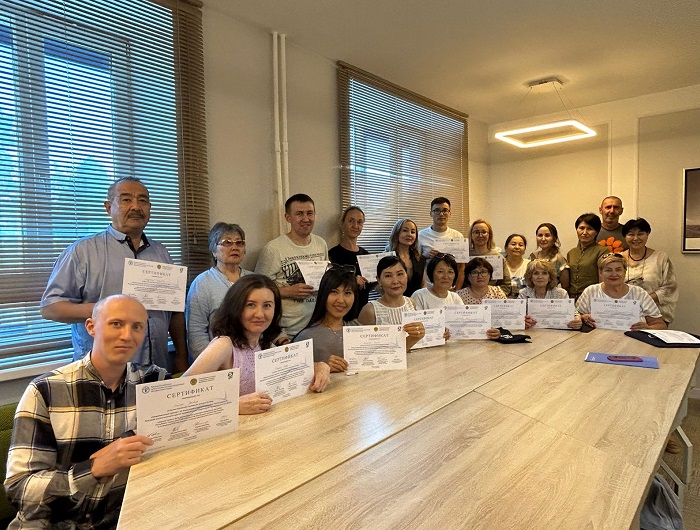

Practical field trip
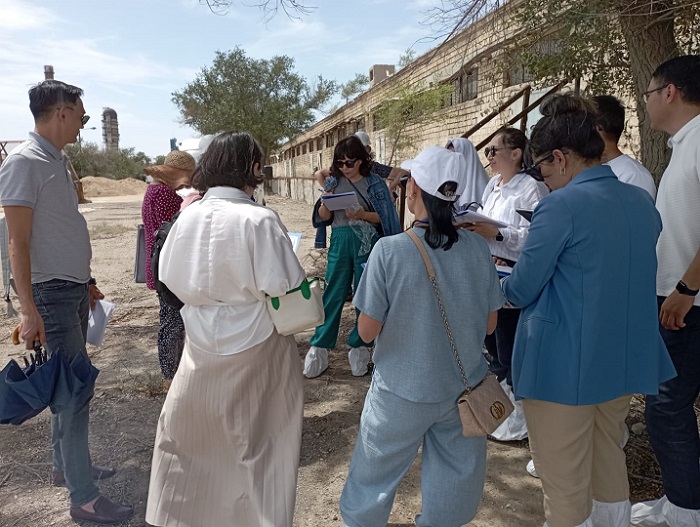

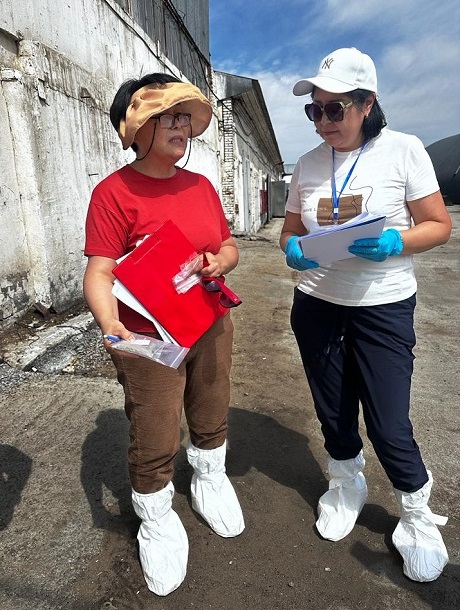
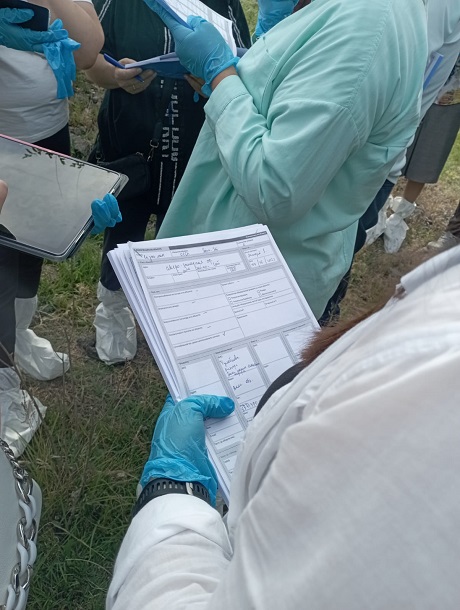
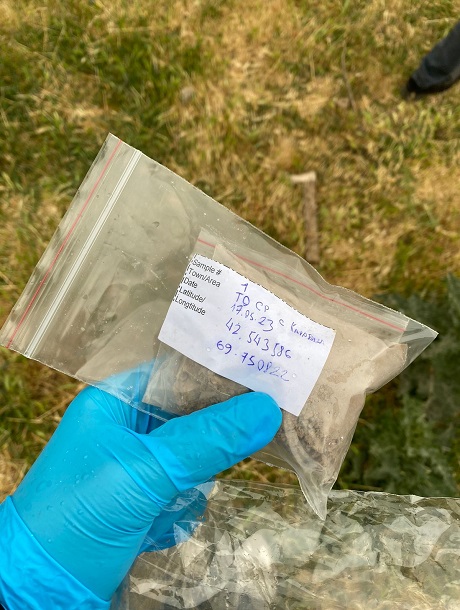
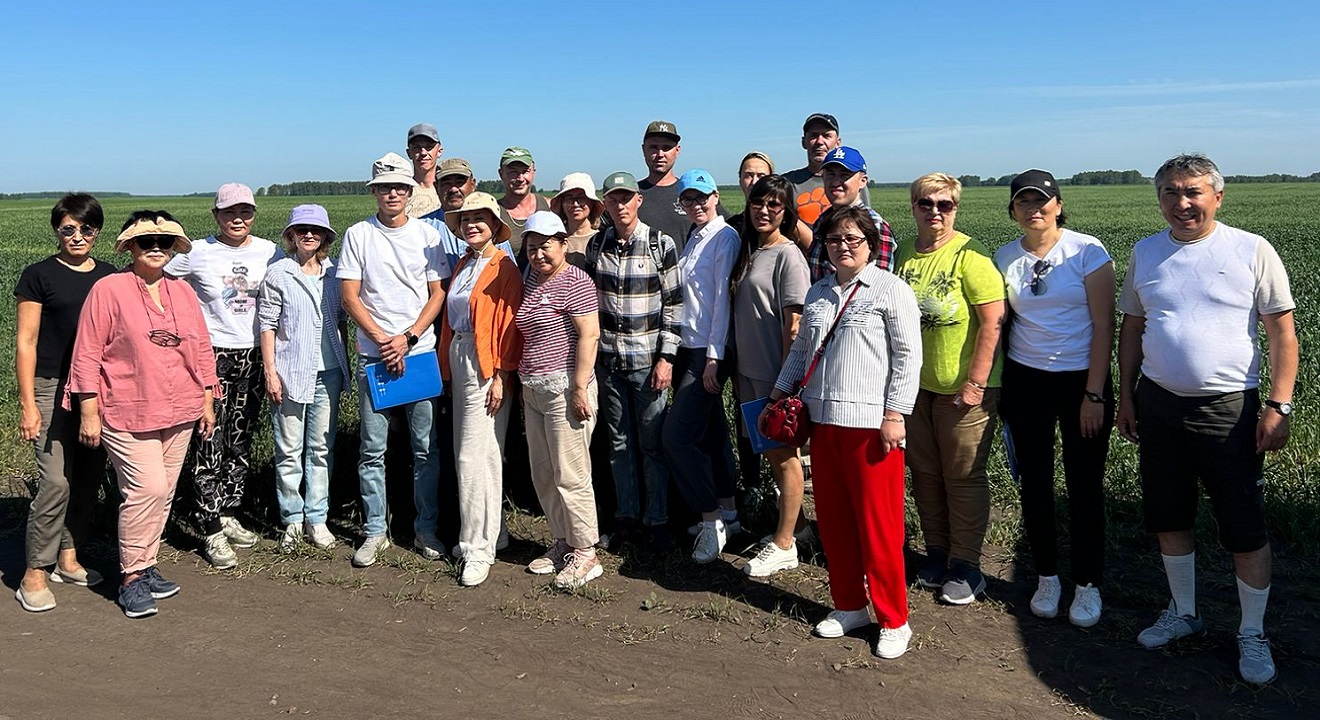
During the first day the participants learned about:
- training goals and structure,
- role of the Project participants and government agencies,
- past inventory work in Kazakhstan,
- Pesticides Stocks Management System (PSMS),
- EMTK Vol. 1 procedures,
- entering data into the database through COBO application.
On the second day the participants received information about:
- Rapid Environmental Assessment (REA) Methodology,
- efforts and projects related to the safe management of stockpiles of obsolete pesticides: storage, disposal, impact on the environment and human health, cleanups,
- entering data into the FAO REA database,
- the site to visit.
On the third day of the trainings the participants practiced their skills during fieldtrips to contaminated areas. The trainees conducted real site assessments in the field, including site characterization, soil sampling, compliance with personal safety rules, etc. The participants were provided protective suits, goggles, gloves, boots, and soil sampling equipment. During the field session the trainers showed how to properly assess the site using both methods, understand the migration of contaminants, exposure pathways, accessibility, roads, proximity to residential and industrial areas, water bodies, etc. The participants learned how to record coordinates of sample locations and sectors using Global Positioning System (GPS), how to define different sampling sectors, and how to collect target and composite soil samples according to REA protocol. Upon returning to the classroom in the afternoon the workshop was continued. The participants practiced upload the information obtained from the demo site assessment into the REA online database.
At the end of the workshop FAO awarded each participant a training completion certificate.
Site Assessments
The project team visited 15 regions of Kazakhstan and managed to identify and conduct 159 assessments of pesticide contaminated sites according to REA protocol. The project team took topsoil samples at each site and recorded the coordinates for each sample. The samples were analyzed in the laboratory for the presence of suspected pollutants – persistent organochlorine pesticides. Based on the collected information the REA database automatically assigned a human health risk level for each site and 4% of the investigated sites received high risk scores. It was found that the main sources of pesticide contamination were former pesticide warehouses – 68%.
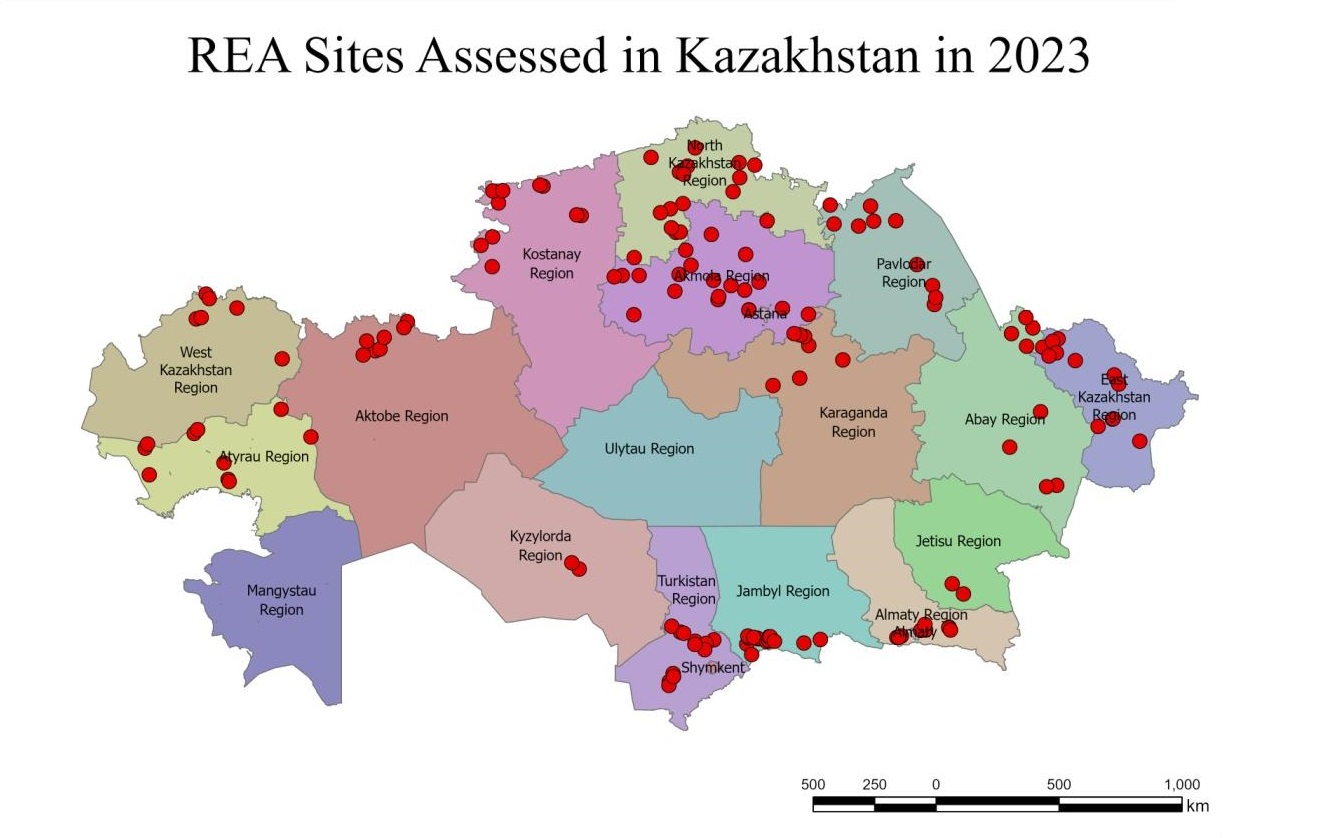
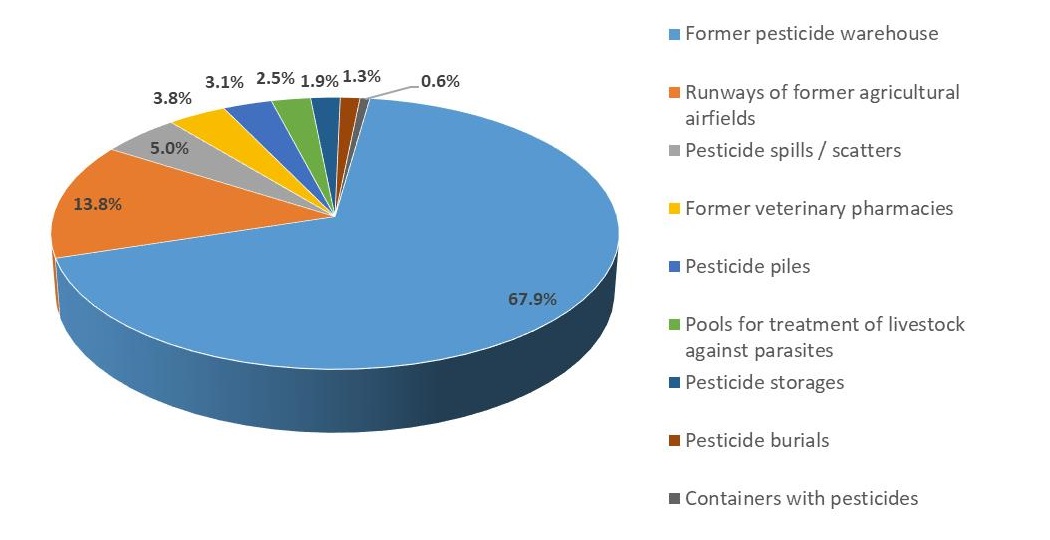
Conclusions and Recommendations
The inventory work should be continued in order to identify all sites contaminated with pesticides in the country. There is information that there were over 700 former warehouses of obsolete pesticides in the country, but only 108 were identified and assessed during this inventory. This means that possibly only 15% of all contaminated sites were identified and assessed in Kazakhstan.
It is necessary to improve the REA database for its further use in Kazakhstan and other countries.
The results of the inventory should be used to prioritize sites for conducting detailed assessments, planning and implementing cleanup (remediation) projects. At the end of the inventory the project team has identified 11 priority sites.
